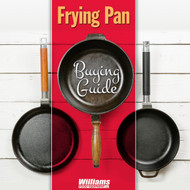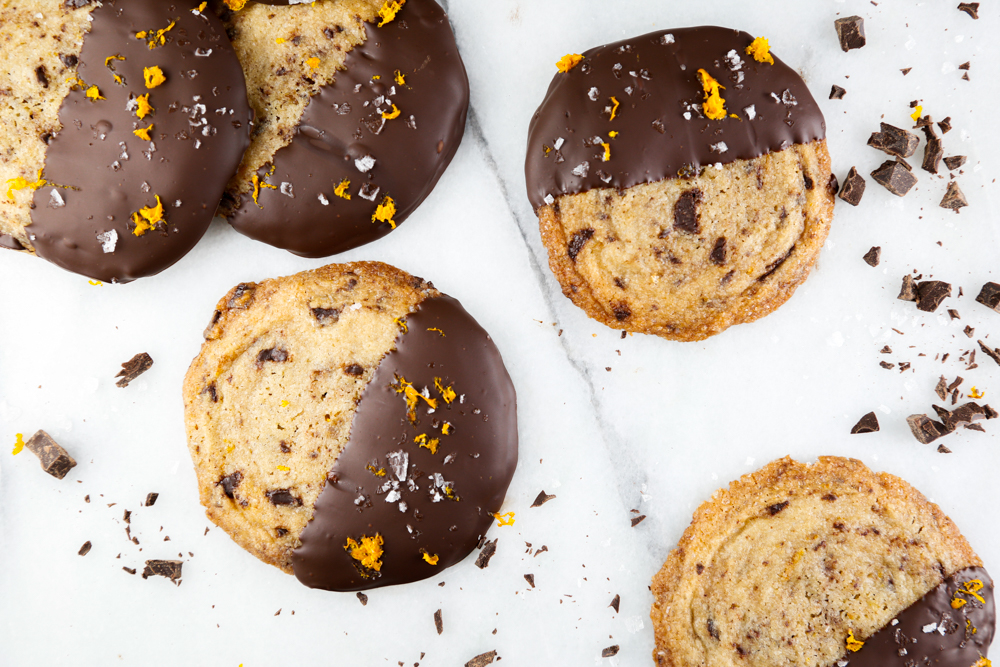Fry Pan Christmas Buying Guide: Get to Know Frying Pans
2018 Sep 14th
Fry Pan Buying Christmas Buying Guide
Whether it is a Fry Pan, Skillet or Sauté pan we find ourselves constantly on the search for the perfect pan for everyday cooking. Or the perfect gift this Christmas season. This however can be difficult with such a wide variety of pans available on the market. With choices in material like Aluminum, Stainless, Cast Iron, and Copper; and coatings like Teflon, Ceramic, and Granite/Titanium; sometimes it can become a bit overwhelming when trying to find the best pan for your needs. We will take a closer look into each, while also taking into account the pros, cons and the types of stove tops they can be used with.
Firstly you’re going to want to consider your cooking style. What are you mainly going to be using the pan for? A pan with low sides makes it easy to flip pancakes; whereas one with high sides will make it easier to contain the dish when cooking something such as a vegetable stir fry.
Next you’re going to need to know which type of range you own. Some units such as induction stove tops are not capable of heating pans that do not contain a magnetic metal, making pans like aluminum useless on these. If you were to own a gas, electric coil, or halogen range however any pan would be able to be used; with the main differences between each being the heat up time, heat distribution and ease of cleanup.
You will also need to decide if you would like a pan with some sort of non-stick coating. A non-stick coating will make flipping delicate items such as eggs much easier than one without. But a pan without any type of coating will last a lifetime as there is nothing to degrade on the pan. Non stick pans such as Teflon have been leaders in the non-stick realm for generations but have become known to peel or chip off over time due to scratches from utensils and overheating; as it starts to break down the PTFE’s at temperatures above 350°C. In order to combat this, manufacturers have now started releasing ceramic and granite coatings that are much more durable against scratches and have similar non-stick qualities, but with much higher temperature tolerances allowing up to 1000°C. The best non-stick on the market being Gastrolux; constructed of a mixture Biotan and titanium (PFOA and PTFE free) it has won the award of best non-stick pan since 1986.
Lastly you’re going to have to decide on a material for the pan. By far the trickiest portion of shopping for a pan as this will make all the difference in how fast it takes for the pan to heat up, how long it retains its temperature once hot, how even the heat distribution is, and how it will be cared for and cleaned once finished.
The least expensive material and usually the most popular in the restaurant industry is the aluminum pan. This is a staple due to its great heat distribution and inexpensive nature as it allows restaurants and home chef’s to replace on a more frequent basis while providing excellent cooking results. These pans are not induction capable or dishwasher safe, as they tend to oxidize when left in contact with dish washing chemicals. Aluminum pans have also been given a bad rap as of late due to the fear of its association with Alzheimer’s; this only becomes relevant however when aluminum is smoked and inhaled. Requiring the pan to have been heated in excess of 700°C, to even make possible (let’s be honest if you are doing this, you shouldn’t be in a kitchen).
A step up from these would be an Anodized aluminum pan; meaning that the pan has been put through an electrolytic process used to increase the thickness of the natural oxide layer on the surface making it much harder than regular aluminum and much more durable than a nonstick pan. On the other hand, like a nonstick pan, you should never wash it in the dishwasher, as it will ruin the surface in both cases and unless magnetic steel is added to the base, these will not be induction capable. Some companies do make it induction capable however, with one of the most popular being produced by Le Creuset.
Next in line would be the most popular Stainless Steel. It can be used on any type of stove top from Gas to Induction. These are also the easiest to care for and maintain, as they can be soaked, scrubbed, and dish washed without fear of damage seeing a lifetime of use.
Within the realm of stainless fry pans however there are a few different quality differences; ranging from an enclosed aluminum base unit, to Tri-ply, 5-ply and even 7-ply construction. An aluminum base pan is exactly as it sounds; an aluminum core/disk is placed solely on the bottom of a stainless pan in order to help with even heat distribution. A Tri-ply pan will have a complete layer of aluminum from rim to rim sandwiched by a piece of stainless on top and bottom. This will allow searing of meats all the way up the sides of the pan, where an enclosed base pan will not distribute the heat up the sides of the pan leaving the center of the pan much hotter. Taking it a step further are the 5-ply and 7-ply constructions made famous in quality by both Demeyere and All-Clad, where alternating layers of aluminum and stainless are pressed together creating superior heat distribution and retention. Tri-ply is the most popular of these as it usually gives the best bang for your buck, providing quality in construction, heat retention and evenness; without breaking the bank.
Now to change it up a bit and introduce cast iron; you either love it or you hate it. Cast iron is a product that can have great cooking benefits but Iron requires much more care in the way it is cleaned and maintained/seasoned. Seasoning cast iron is every easy, just simply coat the pan with a high heat oil or lard and then place in an oven for about an hour at 400°F, done. Cast Iron can not be soaked however and it is best to wash with hot water and stiff bristle brush. Once clean you will want to immediately dry with paper towels (or put on high heat for a few seconds to dry), as they rust if not properly dried (If rust does appear, simply re-season the pan). Iron Pans however are much more tolerant with higher temperatures, making them preferred when broiling/finishing in the oven or even outdoor cooking over an open fire. Also they are the only pans that can actually transfer very minute iron deposits into your food actually assisting people with low Iron deficiency (usually females). One downside to cast iron is that if you own an induction or halogen (glass top) range, you will want to ensure there is no built up carbon residue on the pan or your range as that can cause scratches in the glass top. In order to avoid this you always want to ensure that the bottom of the pan is smooth and free of any sharp imperfections and try not to move the pan on the stovetop while cooking. Some manufacturers such as Staub and Le Creuset coat their cast iron pans in a ceramic enamel coating to eliminate this fear and if seasoning your pans and scratches do worry you, it’s more than recommended checking our their hand enameled French made products.
Finally, we’ve saved the best for last; Copper. Copper pans are far superior to their aluminum counterparts as copper is a better conductor of heat, but due to its cost you only see it produced in the highest end collections such as Mauviel, Demeyere andAll-Clad. Copper however tends to tarnish from fingerprints, so is usually enclosed hidden beneath the stainless layers for protection. Whereas you need to use high heat with most other pans listed above, it is recommended that you start with medium heat as copper reacts to temperate changes much quicker than aluminum. Copper is also not induction capable. But in saying that, all of the brands listed above add a magnetic stainless layer to make using it on these ranges possible.
Any of these above choices would be great additions to your kitchen; you will just need to take into account your expectations of that piece. In today’s age of quick preparation and cleanup it is definitely worth looking into a product such a Gastrolux that pretty much does it all with its non-stick, durability, and ease of cleanup. Or even a cast iron piece that will specialize in searing your meats.




